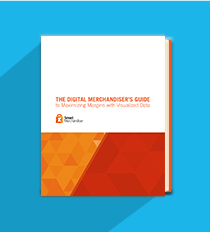
When you're selling items online, you must bridge a tactical disconnect between the buyer and the item for sale.
The customer can’t pick up the item or try it on – a vital part of the sales process. With the loss of touch, the visual element takes center stage and now becomes essential. Digital merchandisers must account for and overcome this loss of the physical elements in the process of selling and buying.
Visual merchandising online requires a careful approach because you lack the other sales elements such as a store ambiance, display and layout techniques, experienced sales people, and other sensory and tactile factors. But with the three following tips, you can create a striking online visual experience that helps recreate these missing elements through a digital format.
Use Pictures to Your Advantage
First and foremost, with eCommerce merchandising you need to make your images work for you. Photography should earn top billing in your overall budget, and every product should have multiple high-resolution photos from various angles. The use of photos isn’t simply to show a picture of the item; rather they should be used to recreate the ability of the customer to handle the item and experience what the product might feel like.
This requires creative photography, high-resolution images, perfect lighting and an in-depth understanding of the brand. You have to show the exterior and interior of items, and, if at all possible, include photos and videos of the product in use in real life. Couple these elements with a zoom feature so the customer can examine the product just like they would in person at a traditional brick and mortar store.
This is a highly effective sales method. As noted here by imaging company Snap36, their 360 degree imaging technique allowed online merchant Golfsmith.com to increase individual product sales by as much as 40 percent.
Use Models If You Can
There’s nothing quite like the human element. A big part of selling clothing and other accessories is how the buyer thinks it will look on them. Even the best imaging cannot recreate this. There is a world of difference between simply seeing a shirt on a hanger and seeing it worn by a real person. Using models is especially important if you sell women's goods. According to research by Drapers, women’s clothing can see a sales boost of 5 to 20 percent with a live model. Men tend to favor live models on pants, jeans, and underwear.
Layout
The key to a good layout lies in the overall style and visual element found on a page. While necessary data and product information should always be easily accessible, it should not take center stage. A high-resolution photo of the product should be front and center, as this is the key element and major deciding factor in an online merchandising environment. This allows you to catch the customer’s attention within seconds. Keep the product pages clean, uncluttered and distraction-free.
Once a customer is interested, then they can learn more about the item itself in a product detail areas. Resist the temptation to pack your pages full of every last detail. The stylistic elements of many layouts these days are inspired by blogs (this phenomenon is studied here by EDITD in great detail). Your site should appear less corporate and more free flowing to attract today's online shoppers. So don’t be afraid to experiment. Put up pictures of entire outfits, have daily blogs about trends, and publish daily tips featuring a product.
As you can see, visual merchandising online requires a new approach, but the methods are as old as business itself. Use imagery to enable the customer to examine your products from a multitude of angles in order to recreate the store experience. Second, use models to allow the customer to have a ‘stand in’ and recreate the experience of trying on an item or accessory. Third, use a more modern blog approach on your site layout and content to foster and encourage customer interaction. This recreates the salesperson and customer relationship in a digital format.
Improving profit margins is at the top of all eCommerce merchandiser’s to-do lists which is why we’ve created The Digital Merchandiser’s Guide to Maximizing Margins with Visualized Data eBook.
Download the eBook to learn more!


